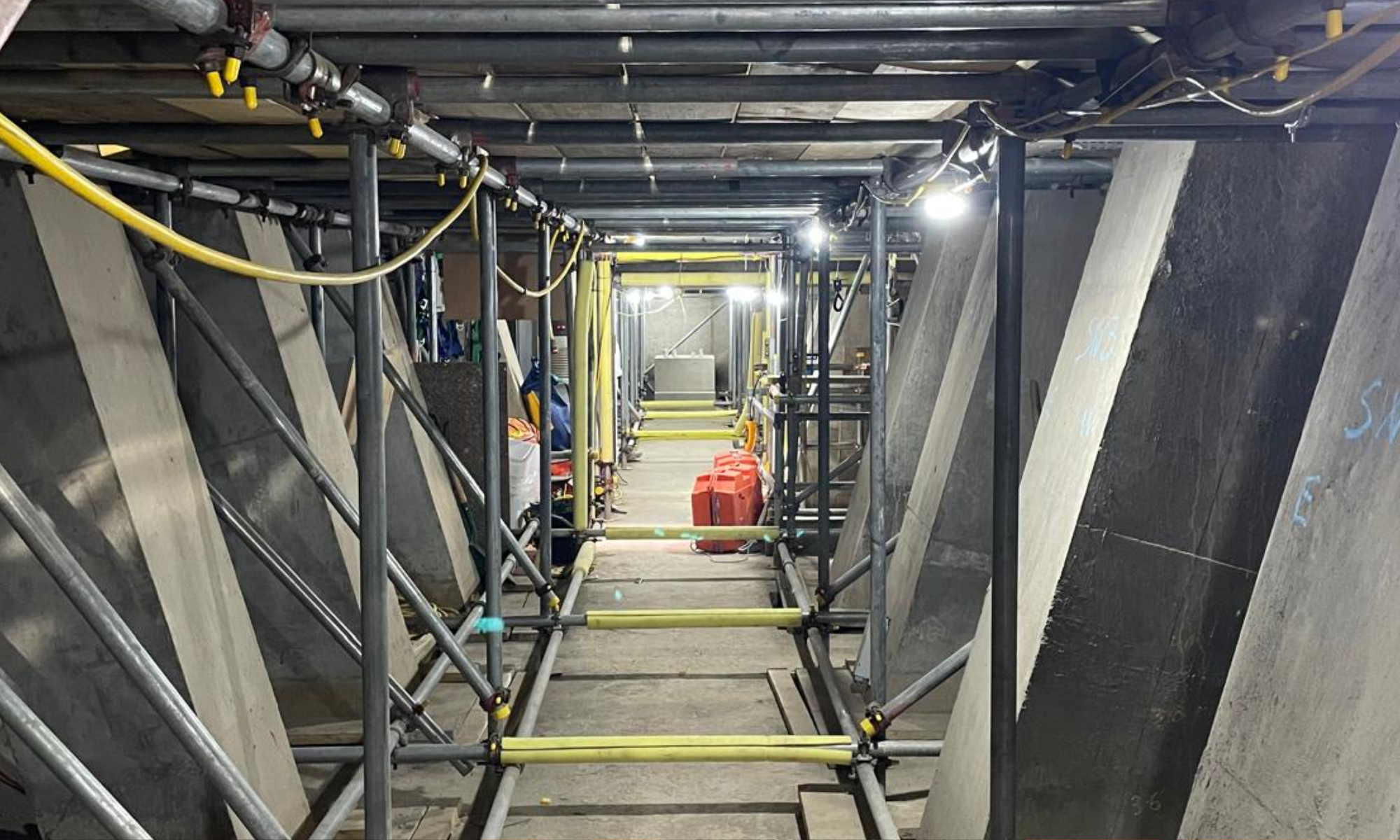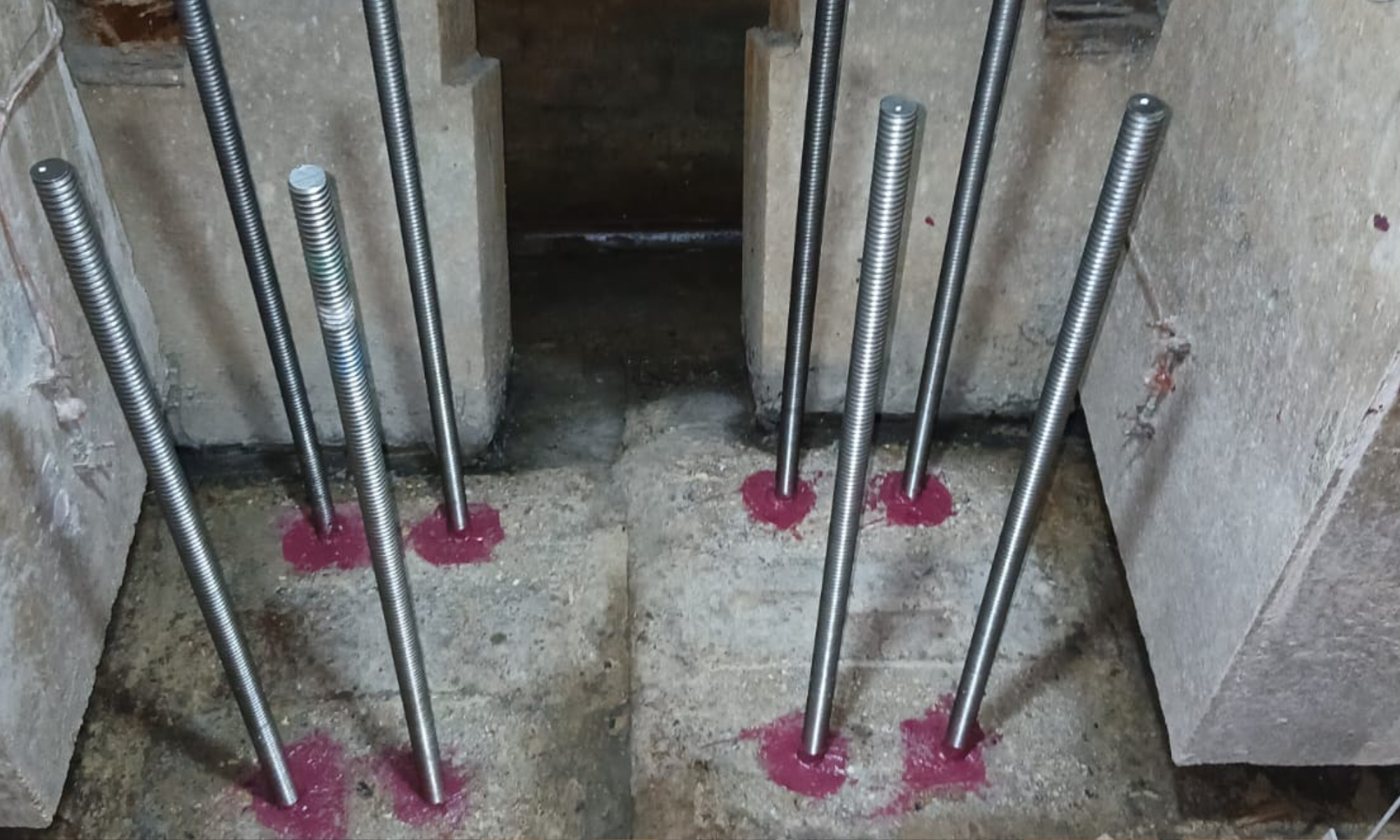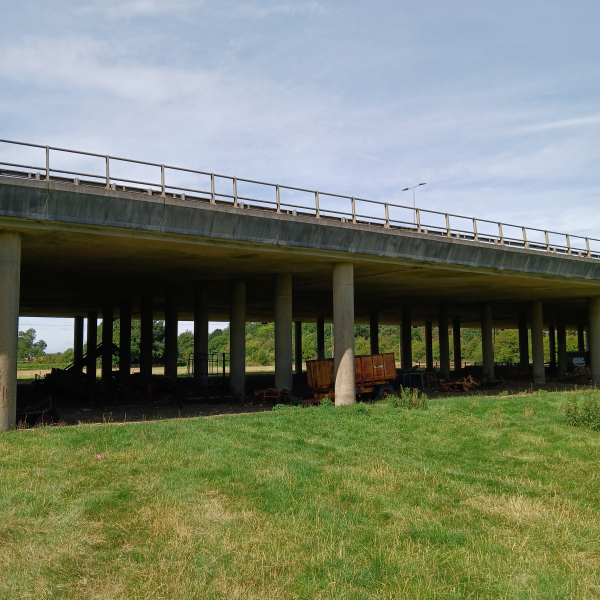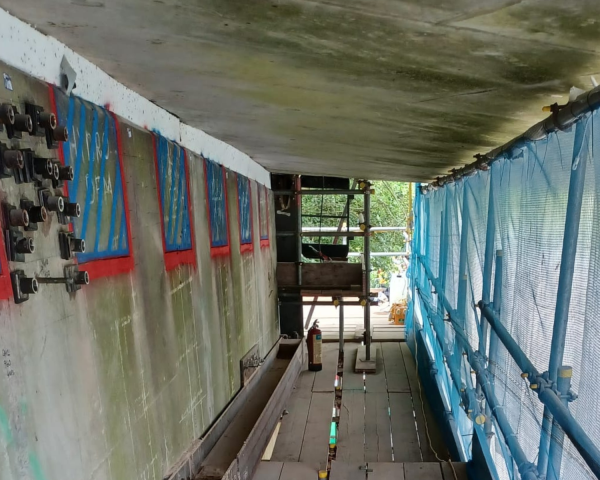
A34 Thames Wytham Remedials
VolkerLaser was appointed principal contractor by National Highways to deliver essential remedial works at the A34 Thames Wytham Crossing- a single-span structure carrying traffic over the River Thames west of Oxford. The structure consists of two parallel slab decks supported by 12no inclined V-shaped legs at each abutment, fixed in place by concrete hinges.

What we're doing
The need for strengthening was identified following monitoring that began in 2019, which revealed reduced prestress values in the rear support legs of the post-tensioned section. As a result, VolkerLaser was contracted to deliver a strengthening solution that introduces an alternative load path through each rear leg. The scope of works includes the installation of external post-tensioned multistrand tendons between the lower anchor blocks and the top diaphragm walls.
Ahead of construction, our specialist team participated in a three-year Early Contractor Involvement (ECI) period with National Highways and the scheme’s designers to develop and approve a detailed strengthening solution.

Enabling works began in April 2025 and have progressed steadily. Work began with the installation of scaffolding to access both the top and bottom abutment chambers. With the lower chambers classified as a medium-risk confined space, our team facilitated safe access through on-site rescue teams and comprehensive entry control.
Following access setup, the team marked and recorded positions for tendon installation and drilled holes in the top and bottom abutments, as well as the intermediate slab. The team is currently installing reinforcement, before the placement of formwork and concrete pours for the anchor blocks. Pre-stressing works are due to begin in October 2025, with the tendon installation being conducted in a sequenced operation to ensure structural stability.

Given the bridge’s riverside location and proximity of a Site of special scientific interest (SSSI), securing flood risk activity permits and collaboration with Environment Agency (EA) was a key step before mobilisation. The project is taking practical steps toward reducing its environmental impact- running entirely on HVO fuel and trialling a direct solar-to-battery setup—cutting generator load by 5.6% and saving 7.7 tCO₂e in May 2025 alone.
Instagrid units reduce emissions by around 200kg CO₂ per month, and hybrid solar-powered welfare units at satellite compounds save over a tonne each. The main compound’s eco-units are 52% more efficient than standard ones, and a solar CCTV tower supports further carbon reduction.
This project is due for completion by December 2025.


